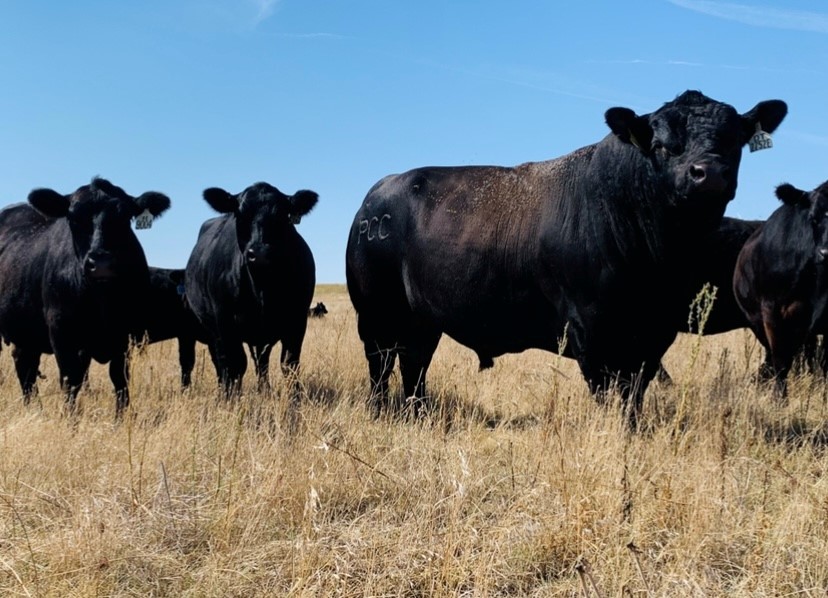Bull to Cow Ratio
Recently, I have had several phone conversations with customers and potential customers about how many cows you should run with a bull during breeding season. As you might expect, there is a difference between what status quo bull producers recommend and what Pharo Cattle Company recommends.
I’ve previously written about how Sex is NOT Work for a Bull. Have you ever heard a veterinarian or a bull producer caution against overworking a bull – especially a young bull? What do they mean? How can you overwork a bull? They apparently don’t know there is nothing a bull would rather do than breed cows.
So why do the experts caution against overworking a bull? The problem lies in the fact that most bulls are high-input, overfat Diesel Bulls that were developed on a feedlot ration. They require more than the environment can provide. They melt and fall apart when introduced to the real world. Many of these overfat Diesel Bulls go lame. Sex is not the problem! The problem is in the way these bulls were bred, selected and developed.
Below is the long-held status quo recommendations for bull to cow ratio:
1. 12 – 15 month old bulls 10 – 12 females
2. 15 – 18 month old bulls 12 – 18 females
3. 18 – 24 month old bulls 18 – 25 females
4. 24 month and older 25 – 35 females
In nearly all situations, Pharo Cattle Company recommends you double the number of females per bull – but only if you are using PCC bulls. That means you will only need to purchase half as many bulls as you used to purchase. If you follow the status quo recommendations with PCC bulls, you will end up getting bulls hurt.
The larger the cowherd, the higher our recommended cow to bull ratio. For example, putting one bull with 50 cows might make me a bit nervous because he has no backup. Putting four bulls with 200 cows, however, does not concern me one bit. If one of those bulls gets injured, I would have no problem letting the remaining three bulls finish the season – even if it’s early in the season.
What’s a bull worth that can breed twice as many cows for twice as many years? You will be happy to know he is worth a whole lot more than you will ever have to pay for him! Our low-input Solar Bulls will cost about the same as the high-input, overfat Diesel Bulls you have been using.
To avoid bull injuries, we strongly recommend you reduce the number of bulls by at least 50% after the first 21 days. If you are calving in sync with nature and/or with your forage resources and if your cows are in good enough shape to cycle, then 70 to 80 percent of your cows should be bred in the first 21 days. You won’t need all of your bulls to breed the remaining 20 to 30 percent.
Below are three of many, many testimonies shared by PCC Customers:
I’m thinking we will sell one of the bulls we purchased from you after this breeding season – not because he isn’t producing great calves and not because he is a hard keeper. We have put him with 50 to 60 cows every year – and this year he is nine years old! This bull has made a great impact on the quality of our herd just like the four others we have purchased from you.
Dave Fuqua – Texas
I have shared this story before with the PCC Discussion Group. In a herd of 240 black cows, I had nine Charolais bulls and one Angus bull. The following year, we had 135 black calves. This got me to thinking about what a bull could do if left alone to do his job without other bulls competing – and in some cases injuring the good bull.
Storm Casper – Colorado
We have had really good experiences with PCC bulls breeding a lot of cows. PCC Axel was one of the best! He bred a bunch of cows in Alberta – and then we hauled him to Saskatchewan and put him with another 70 cows. He bred most of those cows in a 50 day period.
Ross MacDonald – Saskatchewan
What most bull producers do to get a bull ready for breeding season is equivalent to getting a long-distance runner ready for a marathon by setting him down in front of the television and feeding him nothing but donuts for four months. Consequently, it’s been estimated that only one out of three bulls will last long enough to have a second breeding season. With the high cost of bulls, that is totally unacceptable!

HOLA, DONDE PUEDO CONSEGUIR SEMEN DE SUS TOROS PCC AQUI EN MEXICO
Hola, si habla inglés, llámenos al 800-311-0995. Si solo habla español, envíenos un correo electrónico a info@pharocattle.com. ¡Gracias!
No hablo Ingles, entonces envío correo, muchas gracias,
¡Qué bien, Jesús! ¡De nada!